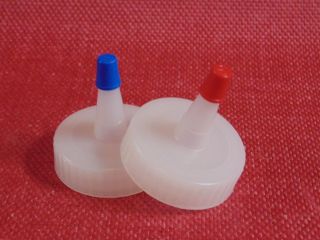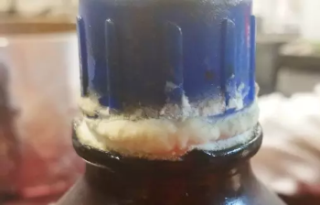32 Fluid Ounce Kit (Combined Volume)
16 ounce PART A -RESIN
16 ounce PART B -CURING AGENT
EPOXY SYSTEM FOR STRUCTURAL BONDING APPLICATIONS
1:1 Mix Ratio
90 Minute Working Time
It is FDA Compliant for direct and indirect food contact under FDA CFR Title 21, Part 175.300 mandates
DESCRIPTION
MAX BOND Medium Viscosity A/B is a two-part, epoxy-based resin system specially formulated to yield structural bond strength to metals, plastics, wood, concrete, tile, and composite substrates (Carbon Fiber, Fiberglass, Kevlar, Quartz, Basalt FRP).
It is mixed 1:1 by weight or by volume and offers up to 60 minutes of working time (200-gram mass). The mixture is applied by brush, roll coater, trowel, or injected into place.
For meter-mix dispensing, use an 18 element static mixer to achieve a homogeneous consistency.
MAX BOND Medium Viscosity A/B cures at room temperature or heat cured for faster processing. It cures clear (slight amber color) when used as a laminating adhesive for transparent substrates such as glass and plastic films.
MAX BOND Medium Viscosity A/B is an excellent adhesive for marine applications such as boat building and repairs, architectural construction, aerospace composites, and non-conductive adhesive for the electronics industry.
Upon cure, MAX BOND Medium Viscosity A/B demonstrates excellent impact resistance, minimal loss of adhesion from continuous water immersion, cyclic vibrations, and seasonal temperature changes from -40°C to 90°C.
MAX BOND Medium Viscosity A/B demonstrates structural bond strengths to a variety of substrates commonly used in composites industry such as steel, aluminum, soft metals, fiberglass, concrete, ceramic and most plastics.
MAX BOND Medium Viscosity A/B performs well in wide range of service temperature and resists cracking and delamination due to cyclic vibration, thermal expansion, and contraction. It is an undiluted epoxy resin formulation that yields high mechanical performance and compliance to military specifications listed below.
MAX BOND A/B Conforms To Hundreds of Aerospace /Military/Naval Materials Specifications
MIL-A-8623 T1
MS-511
MMM-A-134 Type1 and Type 2
OS-9923A
Boeing BMS-5-29
NASA Requirements For Low Outgassing Properties -ASTM E 595
Less Than 1% TML And CVCM
-
Brush, Roller Coat, Trowel Applied
-
Bonds Steel, Aluminum, Soft Metals, Concrete, Ceramic, Fiberglass, Composites
-
Excellent Impact Resistance
-
Excellent Balance of Strength and Flexibility
-
Excellent Water/Salt Water Resistant For Marine/Aerospace Applications
-
Low Shrinkage For Excellent Dimensional Stability
-
Wide range of service temperature
THIS KIT IS PACKAGED WITH YORKER CAPS FOR CONTROLLED DISPENSING.

Use these Yorker caps to dispense the material with ease and minimize over pouring and reduce spills. We do not recommend using
dispensing pumps. The curing agent or part B of any epoxy resin system is sensitive to moisture and carbon dioxide, which will react with the curing agent and form carbamate crystals (salt-like crystals that form on the tip of the pump) and reduce reactivity.
Carbamate crystals that form on the pump when the curing agent is exposed to ambient moisture and carbon dioxide.
These crystals are insoluble in epoxy resin resulting in contamination and causes poor cure and amine-blushing.
RESIN CRYSTALLIZATION FROM PROLONGED STORAGE OR COLD WEATHER EXPOSURE
The resin component or the PART A may crystallize due to cold temperature exposure.
Please inspect the resin component for any solidified crystals which will appear as waxy solid or cloudiness on the bottom of the PART A bottle.
An information postcard is included with each package.
View the following video for identification and processing.
DO NOT USE UNLESS PROCESSED TO REVERT ANY CRYSTALLIZED RESIN BACK TO A LIQUID STATE AND AVOID POOR CURED RESULTS.
Density (Mixed) | 1.10 g/cc | ||||||
Form and Color Cured | Translucent Straw Color | ||||||
Shelf Life | 12 Months | ||||||
Viscosity Mixed | 15,540 cPs @ | ||||||
Mix Ratio | Equal parts by weight or by volume | ||||||
Working Time | 90 Minutes @ | ||||||
Peak Exotherm | |||||||
Cure Time | 36 Hrs. Minimum | ||||||
Accelerated Cure Schedule | 2 Hrs. @ | ||||||
|
| ||||||
Hardness | 85 to 90 Shore D | ||||||
Tee-Peel Strength | |||||||
Compressive Strength | 15,800 psi @ | ||||||
Tensile Shear Strength | 4,100 psi @ | ||||||
Elongation | 2.3% Maximum Yield | ||||||
Tensile Strength | 8500 psi (Ultimate @ break) | ||||||
CHEMICAL RESISTANCE TEST | WEIGHT CHANGE % 0.02 | ||||||
ELECTRICAL PROPERTIES
| SERVICE TEMPERATURE - 40 ⁰C to 90°C |
Please View The Following Video For The Proper Mixing Of Epoxy Resins.
It Demonstrates The Proper Technique Of Mixing Any Type Of Epoxy Resin System.
Evidence Of Poor Mixing

How To Mix Epoxy Resin For Food Contact Coating. Avoid Tacky Spots, Minimize Air Bubble When Mixing - YouTube
Video will open in a new window
Using the eBay App? Paste link into a browser window:
Coverage Yield Per Gallon
Use these theoretical factors to determine coverage as a guide for resin usage.
Determine the length x width x thickness in inches to obtain the cubic volume inch of the mixed resin needed.
Use the following equation:
1 gallon of resin can cover 1608 square feet per 1 mil or 0.001-inch coating thickness on a smooth and none absorbent substrate
(a pane of glass for example).
Calculation
(length x width x coating thickness)/ 231 cubic inches per gallon = cubic-inches of coating need
For Example
50 inches x 36 inches x 0.010 (10 mils) = 18 cubic inches
18/231= .0779 gallon of mixed resin needed to cover the surface area
Use these factors to convert gallon needed into volumetric or weight
Measurements use the following factors by the gallon needed:
FOR EXAMPLE:
231 X .0779 = 17.99 CUBIC INCHES Or 4195 GRAMS X .0779 = 326.79 GRAMS
Surface Preparation
METALS Degrease – Wipe laying surfaces with Methyl Ethyl Ketone (MEK) or acetone to remove all oil, dirt, and grease.
Etch – For optimum results, metal parts should be immersed in a chromic acid bath solution consisting of: Sodium dichromate – 4 parts by weight Sulfuric acid – 10 parts by weight Water – 30 parts by weight The solution should be held at a temperature of 160°F (71°C), and the parts left immersed for 5 to 7 minutes.
Rinse – remove metal parts from etching bath and rinse in clean cold water (de-ionized water is recommended). If thoroughly clean, metal surfaces so treated will hold a thin film of water.
Dry – To accelerate drying, items to be bonded can be placed in an air-circulating oven.
ALTERNATE PROCEDURE Degrease, scour and dry – Often etching as outlined above is not practical. The metal surfaces may be cleaned by degreasing as noted above, scouring with an alkaline cleanser followed by rinsing and drying.
Degrease and dry – Degrease the surface as noted above, sand or sandblast the surface lightly but thoroughly. Rinse with acetone or Methyl Ethyl Ketone (MEK), and dry. | GLASS Degrease – With MEK as above, or with a strong boiling solution of a good grade household detergent.
Etch – For optimum results, degreasing can be followed by the chromic acid bath outlined above.
WOOD Sand – Bonding surfaces should be sanded lightly, but thoroughly to remove all external contamination.
Clean – Carefully remove all dust, or particles of wood from sanded areas. A stiff and clean brush or compressed air can be used.
PLASTIC (see Flame Treating below) Clean – Remove all dirt, oil, or other surfaces contaminated with detergent soap or degreasing solvent and water, followed by thorough rinsing and drying. A solvent that does not have a detrimental effect may also be used.
Sand – Surfaces to be bonded should be sanded lightly, but thoroughly to remove surface sheen.
Clean – Carefully remove all dust or particles of plastic from the sanded area. A clean brush, lint-free cloth, or compressed air may be used. |
Obtaining adequate bond strength when bonding plastic-to-plastic substrates or plastic to dissimilar substrates is often a challenge for epoxy bonding.
Flame treatment is the most widely used and cost-effective pre-treatment for polyethylene (HDPE, LDPE, UHMW) and polyolefin-based plastics prior to polymer bonding or printing. The resulting change of the surface by creating an oxidized layer onto the substrate greatly improves the ability of liquids wet-out the surface thus creating a strong adhesive bond between the surface and the coating.
A Flame Treating process consists of exposing the surface to a suitable oxidizing flame for a period in the range 0.2 to 3.0 seconds. This treatment brings about a change to the polymer surface that increases its surface energy allowing fluids to effectively wet-out the surface and permits a strong adhesive molecular and mechanical bond.
Flame Treated Surface Ideal For Bonding




To Make This Resin System To An Opaque Color Add 3% To 5% Of Our Max Epoxy Pigment Paste.

MAX COLOR KIT https://www.ebay.com/itm/311946633043
MAX COLOR KIT https://www.ebay.com/itm/
Adding Color With MAX Color Pigment Concentrates
IMPORTANT NOTICE
IMPORTANT NOTICE
Your purchase constitutes the acceptance of this disclaimer. Please review before purchasing this product.
The user should thoroughly test any proposed use of this product and independently conclude satisfactory performance in the application. Likewise, if the manner in which this product is used requires government approval or clearance, the user must obtain said approval.
The information contained herein is based on data believed to be accurate at the time of publication. Data and parameters cited have been obtained through published information, PolymerProducts and Polymer Composites Inc. laboratories using materials under controlled conditions. Data of this type should not be used for a specification for fabrication and design. It is the user's responsibility to determine this Composites fitness for use.
There is no warranty of merchantability for fitness of use, nor any other express implied warranty. The user's exclusive remedy and the manufacturer's liability are limited to refund of the purchase price or replacement of the product within the agreed warranty period. PolymerProducts and its direct representative will not be liable for incidental or consequential damages of any kind. Determination of the suitability of any kind of information or product for the use contemplated by the user, the manner of that use and whether there is any infringement of patents is the sole liability of the user.
Your purchase constitutes the acceptance of this disclaimer. Please review before purchasing this product.
The user should thoroughly test any proposed use of this product and independently conclude satisfactory performance in the application. Likewise, if the manner in which this product is used requires government approval or clearance, the user must obtain said approval.
The information contained herein is based on data believed to be accurate at the time of publication. Data and parameters cited have been obtained through published information, PolymerProducts and Polymer Composites Inc. laboratories using materials under controlled conditions. Data of this type should not be used for a specification for fabrication and design. It is the user's responsibility to determine this Composites fitness for use.
There is no warranty of merchantability for fitness of use, nor any other express implied warranty. The user's exclusive remedy and the manufacturer's liability are limited to refund of the purchase price or replacement of the product within the agreed warranty period. PolymerProducts and its direct representative will not be liable for incidental or consequential damages of any kind. Determination of the suitability of any kind of information or product for the use contemplated by the user, the manner of that use and whether there is any infringement of patents is the sole liability of the user.









